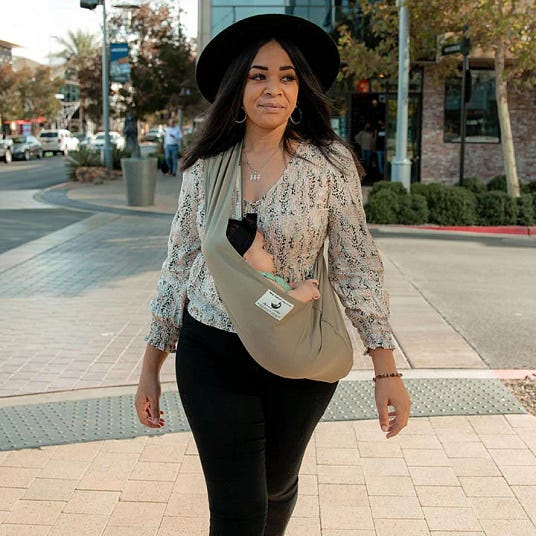William Gibson Aviator Briefcase
Cyberpunk literateur bag
I recently acquired a new bag to tote the laptop computer that is my principal interface with the world in which I exist.
It’s a bag designed by William Gibson, more commonly known for novels such as Pattern Recognition, in which a professional cool hunter named Cayce makes the sneaker-spotting consultancy of the real world’s Faith Popcorn into the romantic material of digital age noir.
Nowadays Gibson makes stuff like bags, including this one, a beautiful product of ballistic cloth and “genuine horse leather.” It includes a custom miniature MAG light attached to the zipper, to help one navigate through Gibsonian mapless territories, and a variety of pockets to stash digital devices, and maybe a Fluo Orange ballpoint pen.
The bag is labeled “Buzz Rickson’s Flight Equipment.” It’s produced by the Japanese faux-WWII military outfitter whose replica aviator jackets were fetishized in Pattern Recognition as one of the only pure and comforting designs in the eyes of the novel’s hyper-sensitive heroine. Porter is a highly regarded Japanese maker of custom bags, in this case for the growing “William Gibson Collection,” which includes jackets, gloves and shoes.
Buzz Rickson’s is a real-life company that should properly exist only in the imagination of Gibson (or perhaps Jean Baudrillard, since it’s a Japanese atelier producing simulacra that surpass the original).
I was elated at this opportunity to personally possess tangible proof that the cyberpunk narrative has thoroughly overtaken consensus reality. I also rather needed a new laptop bag, so I placed my order with the exclusive San Francisco boutique which sells Gibson bags from its trendy storefront on Valencia.
There were three colors to choose from: cyberpunk black, bomber pilot khaki, and tank commander green. I went for the khaki, as it seemed more Global War on Terror-ready, with its Paul Bremer Timberland boot aesthetic.
I have had a lot of laptop bags over the years. In college, I had an insane foam-padded monster from Kensington designed to portable-ize my pre-Power Book 512k Mac Classic. My Patagonia cyber-backpack was adventure-ready, comfortable, roomy, Franco-Californian and indestructible, but couldn’t hold a 15-inch PowerBook when I upsized. A beautiful chimera from Booq looked cool, but made me feel like I should be wearing a Space 1999 uniform to go with it (not a bad thing, necessarily, depending on your date). And my standard Timbuk2 black ballistic cloth messenger bag was seemingly bottomless. That bag worked especially well when I was getting around by bike on a daily basis, in weather fair and foul.
How does the Gibson bag hold up amid this fierce competition?
Price: At $530, it’s at least twice the cost of any of its peers. Call that the simulacrum premium.
Utility: the bag has all the basics, carried out with wabi-sabi devotion to perfection and fine detail: An interior sleeve that can hold a 13-inch laptop. Holsters for three pens and two or three electronic devices and their accompanying cords. A zippered deep interior pocket for precious loose things, like maybe your passport, your checkbook, or your last stash of illegally procured Ativan. Another interior sleeve for letter-sized papers. Two snap-lock exterior pockets, styled like those you’d find on a pair of tactical pants, each about the right size for your laptop cord, a pack of American Spirits, a compulsively accessed Blackberry, or a tattered paperback about the flagellant messiah. An exterior sleeve to hold a folder of declassified documents, a copy of Wallpaper, the day’s Financial Times, an Ace Paperback Original, or an old Penguin. A serviceable shoulder strap, and a very beautiful pair of canvas briefcase straps that overlay perfectly, snapped together by a separate leather dongle. Several carabiner-friendly exterior folds, one of which is pre-occupied by a leather strap dangling a key-ring. Perfect for carrying a hand grenade, a Make magazine IED, or a Paul Virilio postmodern information bomb.
This bag is made for traveling light. It is small, and does not expand like an accordion, or open a door into the Negative Zone in the way the big Timbuk2 bags do. You can overfill it with very little effort, for it is the laptop bag equivalent of a perfectly crafted postmodern Tokyo infill flat. My biggest pet peeve is that the exterior paper pouch cannot be closed over an 8 1/2 x 11 sheet of paper. Maybe it prefers Japanese-sized stationery.
The shoulder strap is not really designed for messenger-style carrying. Indeed, the bag works best when carried briefcase style, loaded only with essential electronics and the light mission dossier containing the glossies of your targets.
After several months of use, I have found that the bag achieves a very effective cyberpunk evangelism, for it really promotes going paperless. For a science fiction writer-slash-technology lawyer, prone to lugging lots of paper, its limited physical dimensions combined with its fetish design qualities retrain one’s eraser-dust laden twentieth century bad habits as effectively as the constraints of a 140-character Twitter box.
Ruggedization: The bag does not have the extra protections of many other laptop bags: padding, waterproof liners, hermetically sealed pockets within pockets. Laptops are increasingly disposable devices for the accessing of networked data, and no longer need to be transported like Fabergé eggs. But the bag holds up well. Mine survived a trip to Mexico City for a conference on parallel worlds (at which the bag also served as a useful prop for illustrating the infiltration of consensus reality by imagined cyberpunk worlds). The bag also survived any mutant strains of influenza and took no permanent stains from Mark Dery’s escamoles. A Saturday morning drenching by an entire plastic pitcher’s worth of Texan iced tea left it unscathed, while the dutiful laptop slept cozily inside. The current editor of COOL TOOLS was there at the time and was laughing his ass off.
The verdict? This is the rip-stop fabric bag that tore the fabric of reality. It features a seal of approval from the Gomi-no-Sensei himself — the William Gibson name carved into the horse-leather, in a perfectly incongruous Japanese designer simulation of your second grade teacher’s perfect cursive.
All good karma for this laptop and its contents, meriting a mostly-unqualified thumbs up.
05/14/09William Gibson Aviator Bag 40,000 yen/$530 Available in Tokyo and select Pacific Rim retailers











